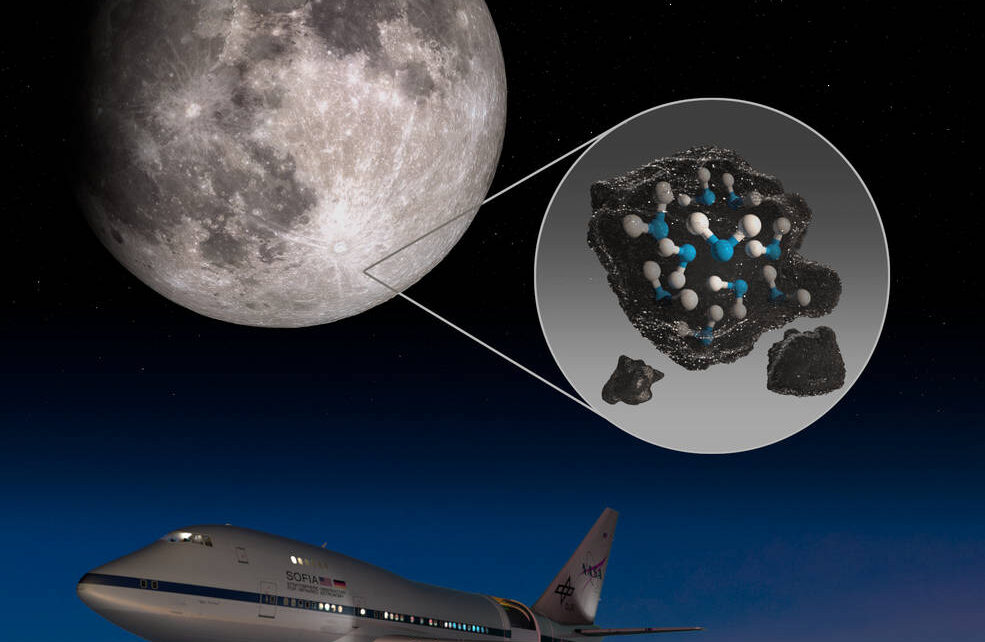Scientists at National Aeronautics and Space Administration (NASA) revealed that they’ve discovered traces of molecular water on the sunlit surface of moon. NASA’s Stratospheric Observatory for Infrared Astronomy (SOFIA) confirmed this.
A team led by Casey Honniball of NASA’s Goddard Space Flight Center in Maryland detected molecular water on the lunar surface, trapped within natural glasses or between debris grains. NASA scientists said that though the moon lacks the bodies of liquid water that are a hallmark of Earth, the lunar water is more widespread than previously known, with water molecules trapped within mineral grains on the surface and more water is perhaps hidden in ice patches residing in permanent shadows.
“A lot of people think that the detection I’ve made is water ice, which is not true. It’s just the water molecules – because they’re so spread out they don’t interact with each other to form water ice or even liquid water,” said Honniball.
The SOFIA has detected water molecules (H2O) in Clavius Crater, one of the largest craters visible from Earth, located in the Moon’s southern hemisphere. Previous observations of the Moon’s surface detected some form of hydrogen, but were unable to distinguish between water and its close chemical relative, hydroxyl (OH).
“Data from this location reveal water in concentrations of 100 to 412 parts per million – roughly equivalent to a 12-ounce bottle of water – trapped in a cubic meter of soil spread across the lunar surface. The results are published in the latest issue of Nature Astronomy,” the statement read. As a comparison, the Sahara desert has 100 times the amount of water than what SOFIA detected in the lunar soil, the statement read. Despite the small amounts, the discovery raises new questions about how water is created and how it persists on the harsh, airless lunar surface.



